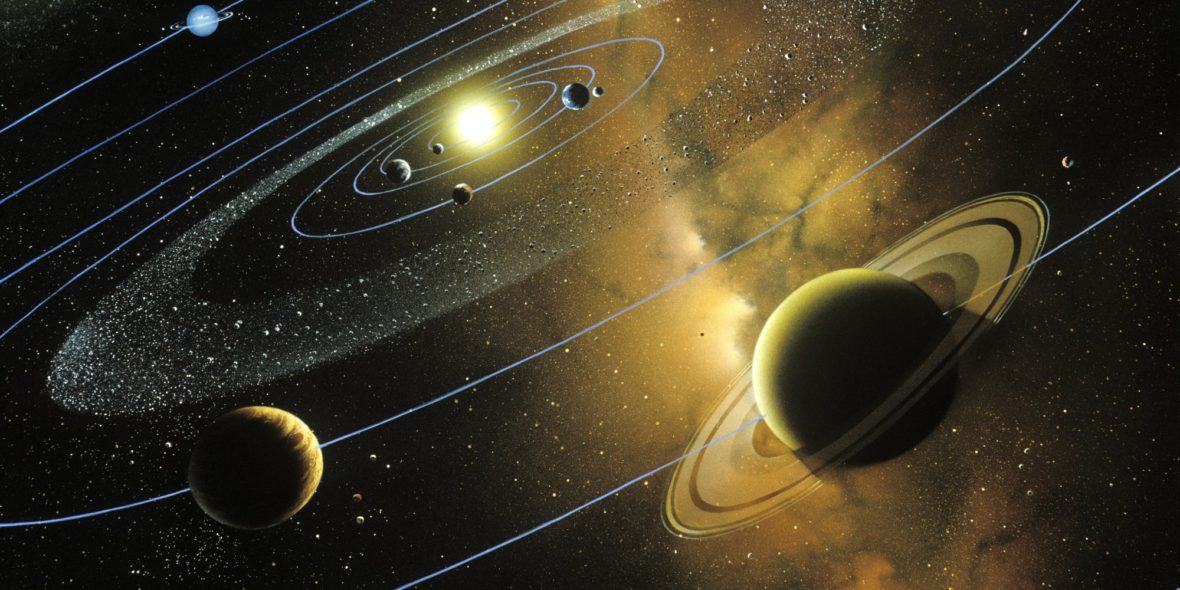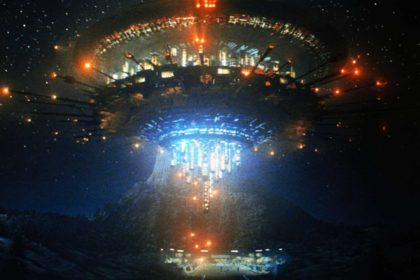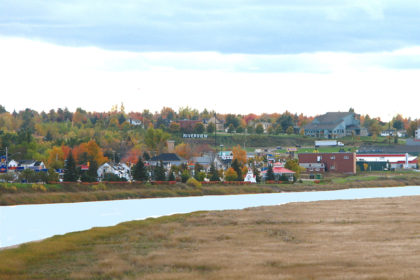The Solar System is the gravitationally bound system made up of the Sun and the objects that orbit it, either directly or indirectly. Of all the objects that orbit the Sun directly, the largest eight are the planets, with the remainder being smaller objects, such as dwarf planets and small Solar System bodies. Take a look below for 26 more interesting and fascinating facts about the Solar System.
1. The formation of the Solar System was caused by the collapse of a giant molecular cloud, the mass at the center collecting to form the Sun and a flat disk of dust around it, which the planets and other bodies would eventually be formed from.
2. 99.86% of the system’s mass comes from the Sun and the majority of the remaining 0.14% comes from the eight planets.
3. The four smaller inner planets, Mercury, Venus, Earth and Mars, are known as the terrestrial planets and are primarily made out of rock and metal.
4. The four outer planets, Jupiter, Saturn, Uranus and Neptune, are known as the gas giants and are substantially larger and more massive than the inner planets.
5. The two innermost gas giants, Jupiter and Saturn, are the larger of the four and are composed mainly of hydrogen and helium.
6. The two outermost gas giants, Uranus and Neptune, are made mostly of ices, such as water, ammonia and methane. They’re sometimes called the ice giants.
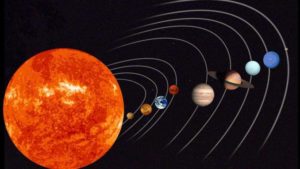
7. The Solar System is home to an asteroid called 243 Ida that has its own moon.
8. Mimas is one of Saturn’s moons and it’s one of the most heavily cratered objects in the Solar System.
9. Ganymede is the biggest moon in the Solar System. If it were orbiting the Sun instead of Jupiter, it wouldn’t even be the smallest planet, as Mercury is smaller.
10. Recently, scientists discovered another ring around Saturn that can only be seen with infrared light.
11. Eris is the biggest dwarf planet in the Solar System and it orbits the Sun at 3 times the distance of Pluto.
12. The Oort Cloud is a belt containing trillions of ciy bodies and is up to 2,000 times farther from the Sun than Eris.
13. The outer edge of the Oort Cloud is where objects are thought to have more gravitational influence from nearby stars than from the Sun.
14. Hyperion, one of Saturn’s moons, is the biggest non-spherical moon in the Solar System. It’s half as dense as water and would actually float in a bathtub if it was big enough.
15. Ceres is found in the asteroid belt between Mars and Jupiter and actually consists of one third of the asteroid belts matter.
16. Ceres contains more fresh water beneath its surface than all the freshwater on Earth combined.
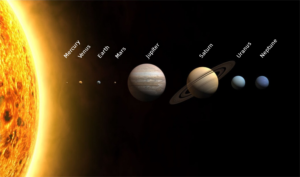
17. Despite the Sun’s mass compared to the rest of the Solar System, volume wide, it’s still really small. In fact, it’s only 1 trillionth of a percent of the entire solar system’s volume.
18. To give you an example of the scale of the Solar System, if the Sun was the size of a white blood cell, the solar system would be the size of the United States.
19. Jupiter has the biggest ocean out of any planet. Since its gassy atmosphere is mostly made up of hydrogen and helium, beneath the upper layer of clouds pressure has to rise to a point where the gases turn to liquid. Scientists theorize that this ocean would be up to 40,000 kilometers deep.
20. It was Eris’s discovery that led scientists to officially define the word “planet” and Pluto was henceforth downgraded to a “dwarf planet.”
21. Despite Mercury’s proximity to the Sun, its lack of an atmosphere makes Venus the hottest planet.
22. The Sun’s outer atmosphere, known as the heliosphere, has been thought to extend as far as Neptune.
23. For most of history, humanity didn’t recognize or understand the concept of the Solar System. Most people up to the late Middle Ages believed that the Earth was stationary and at the center of the universe.
24. Nicolaus Copernicus was the first person to develop a mathematically predictive heliocentric system.
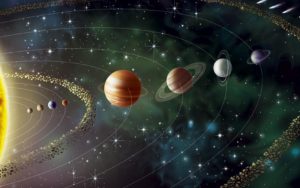
25. In the 17th century, Galileo Galilei, Johannes Kepler and Isaac Newton developed an understanding of physics that led to the gradual acceptance of the idea that Earth moves around the Sun and that the planets are governed by the same physical laws that govern Earth.
26. The Solar System will remain intact roughly as we know it today until the hydrogen in the core of the Sun has been entirely converted to helium, which will occur in about 5 billion years.

